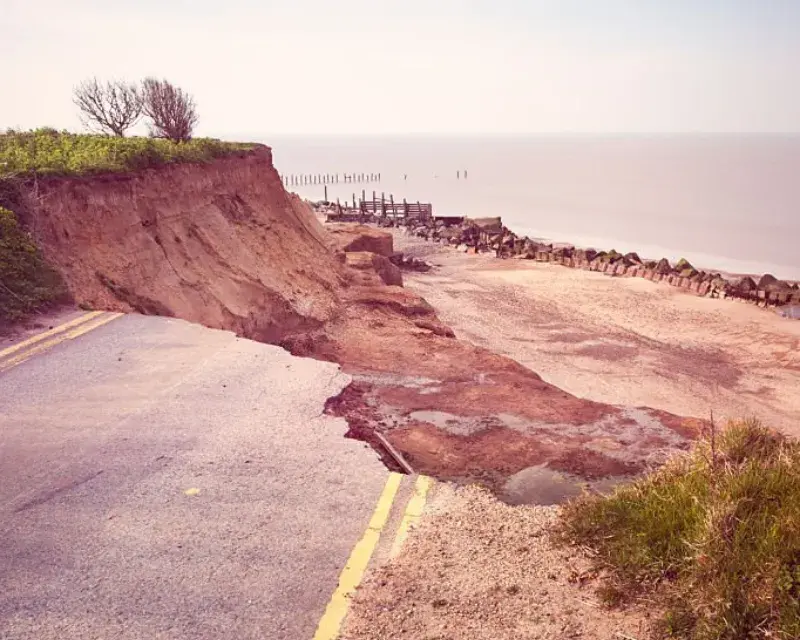Coastal erosion is a growing global concern, threatening the safety and sustainability of shorelines and the communities that inhabit them. With rising sea levels, stronger storms, and natural coastal processes continuously reshaping the land, civil engineers are at the forefront of developing innovative solutions to mitigate erosion and protect coastal infrastructure. This blog explores the various engineering strategies and technologies that can effectively safeguard coastal areas from erosion and preserve the ecosystems and communities that depend on them.
—
Understanding Coastal Erosion: A Growing Challenge
Coastal erosion is the gradual removal of land along the shoreline due to natural forces like waves, tides, and currents. Human activities such as construction, dredging, and sand mining can accelerate this process, leaving coastal areas more vulnerable to damage. The consequences of erosion can be severe, including the loss of property, damage to infrastructure, and the displacement of communities.
Key Causes of Coastal Erosion:
– Wave Action: Waves constantly wear away at the shoreline, especially during storms and high tides.
– Sea-Level Rise: As global temperatures rise, so do sea levels, exacerbating erosion in low-lying coastal areas.
– Human Interventions: Construction near coastlines, such as building ports or seawalls, can disturb the natural sediment flow and accelerate erosion.
Fact: According to the U.S. Geological Survey, approximately 70% of the world’s sandy shorelines are experiencing erosion at an average rate of 1-2 meters per year.
—
Engineering Solutions for Coastal Erosion
To address this pressing issue, civil engineers employ a variety of structural and non-structural solutions aimed at stabilizing shorelines, protecting infrastructure, and reducing the long-term impact of erosion. Here are some of the most effective methods:
1. Seawalls
What Are Seawalls?
Seawalls are large, vertical barriers made of concrete, steel, or stone designed to protect shorelines from waves and tidal forces. They act as a shield between the land and the sea, preventing waves from eroding the coastline.
Benefits of Seawalls:
– Direct Protection: Seawalls offer immediate protection to coastal properties and infrastructure from wave action.
– Durable: They are built to withstand severe weather events and provide long-term defense against erosion.
Drawbacks:
– Seawalls can lead to increased erosion in nearby areas by disrupting natural sediment movement.
– Expensive to build and maintain over time.
Tip: To reduce the environmental impact, engineers can design curved seawalls that dissipate wave energy more effectively and minimize erosion.
—
2. Breakwaters
What Are Breakwaters?
Breakwaters are offshore structures made of rocks, concrete, or steel, designed to absorb and deflect wave energy before it reaches the shore. By reducing wave intensity, breakwaters help preserve beach areas and protect coastal infrastructure.
Types of Breakwaters:
– Detached Breakwaters: Positioned offshore, parallel to the coastline, these structures help to form calmer waters between the breakwater and the shore, reducing erosion.
– Submerged Breakwaters: Built below water level, these are less intrusive but still reduce wave energy and help preserve natural shorelines.
Benefits of Breakwaters:
– Wave Energy Reduction: They provide long-term protection by decreasing wave energy and slowing down erosion.
– Natural Shoreline Preservation: Breakwaters help retain sand along the coast, maintaining beach aesthetics and ecology.
Drawbacks:
– High construction and maintenance costs.
– Potential to alter local ecosystems by changing wave patterns and sediment flow.
—
3. Beach Nourishment
What is Beach Nourishment?
Beach nourishment involves adding sand or sediment to eroding beaches to restore their natural profiles. This method helps replenish lost sand and extends the beach further into the sea, offering natural protection from coastal erosion.
Benefits of Beach Nourishment:
– Aesthetic Value: Beach nourishment enhances the visual appeal of the coastline and provides recreational opportunities for communities.
– Flexible and Sustainable: Nourished beaches act as natural buffers, absorbing wave energy and protecting inland areas without requiring hard structures.
Drawbacks:
– Temporary solution; sand may need to be replenished regularly due to ongoing erosion.
– Can be expensive and requires continuous monitoring.
Tip: Combining beach nourishment with plant-based stabilization, like dune grass, enhances the effectiveness and longevity of this solution.
—
4. Vegetation and Dune Stabilization
What is Dune Stabilization?
Planting vegetation along dunes and beaches is a natural way to combat erosion. Vegetation such as grasses, shrubs, and trees help hold the soil in place with their root systems, preventing it from being washed away by waves or wind.
Benefits of Dune Stabilization:
– Cost-Effective and Natural: Plant-based solutions are relatively inexpensive and offer a sustainable way to protect shorelines.
– Biodiversity Support: Stabilizing dunes with native plants supports local ecosystems by providing habitat for wildlife.
Drawbacks:
– May not offer immediate protection during severe storms or high-energy wave events.
– Requires ongoing maintenance and replanting to ensure vegetation remains effective.
—
5. Geotextile Tubes and Revetments
What Are Geotextile Tubes?
Geotextile tubes are large, durable fabric tubes filled with sand or sediment that are placed along coastlines to absorb wave energy and prevent erosion. Revetments, on the other hand, are sloped structures made of rock or concrete placed on shorelines to break the impact of waves.
Benefits of Geotextile Tubes and Revetments:
– Durability: These structures can withstand significant wave energy, providing long-term protection for coastal areas.
– Adaptability: Geotextile tubes can be filled with local materials, reducing transportation costs and environmental impact.
Drawbacks:
– Installation can be challenging in certain environments, particularly in areas with frequent storms.
– Regular maintenance is required to ensure their effectiveness over time.
—
Innovative Approaches in Coastal Engineering
As technology and engineering techniques advance, civil engineers are constantly seeking innovative ways to combat coastal erosion. Some of the most promising approaches include:
1. Living Shorelines
Living shorelines incorporate natural elements like plants, sand, and oyster reefs to stabilize coastlines. These methods focus on promoting ecosystem health while providing natural erosion control.
Example: Oyster reefs can act as natural breakwaters, reducing wave energy and protecting nearby shores.
2. Hybrid Solutions
Combining traditional structures with natural solutions (e.g., seawalls paired with dune restoration) provides a balanced approach to erosion management. These hybrid solutions offer the durability of hard engineering with the ecological benefits of nature-based methods.
Example: A seawall reinforced by a vegetated dune system can offer both robust protection and natural ecosystem support.
—
Conclusion
Coastal erosion presents a significant challenge for communities and ecosystems, but civil engineers are developing a variety of solutions to address this issue. From seawalls and breakwaters to beach nourishment and vegetation stabilization, these strategies help protect shorelines, infrastructure, and the people who depend on them. As coastal environments continue to evolve due to climate change and human activities, innovative and sustainable approaches to erosion control will play a critical role in safeguarding coastal areas for future generations.






